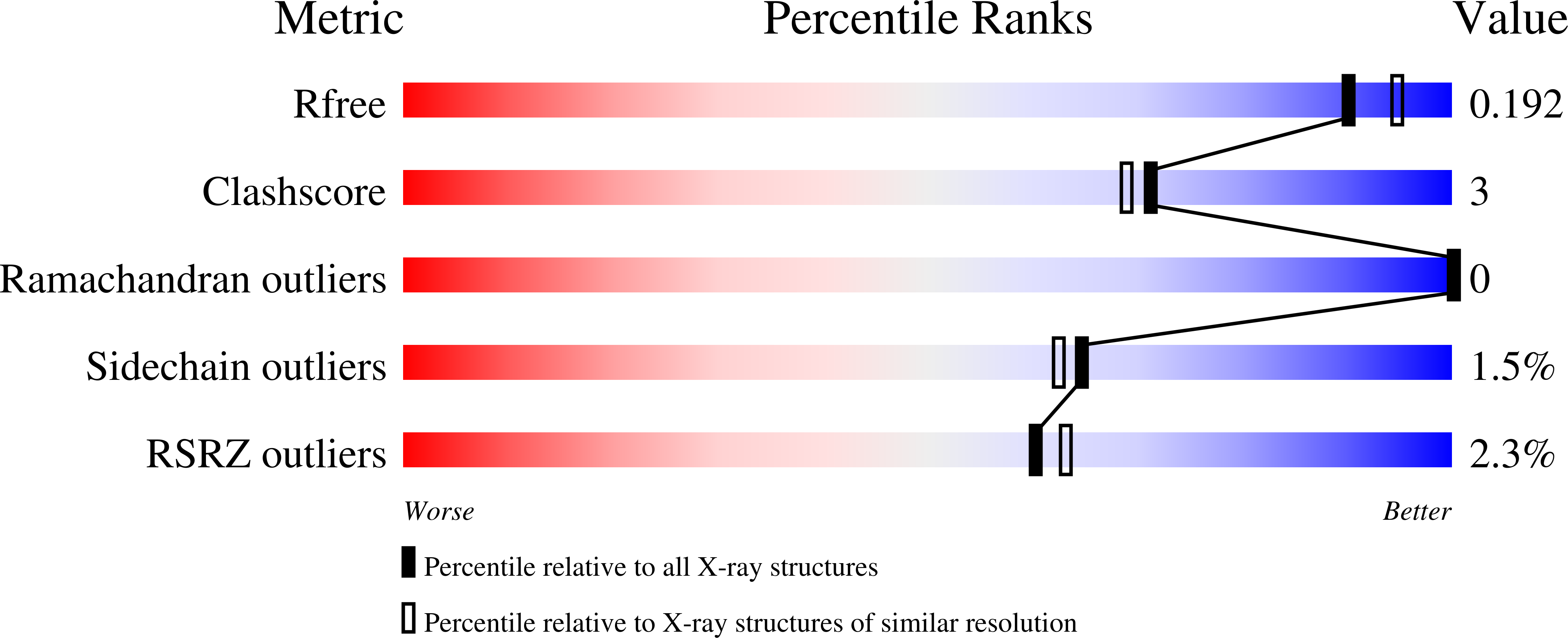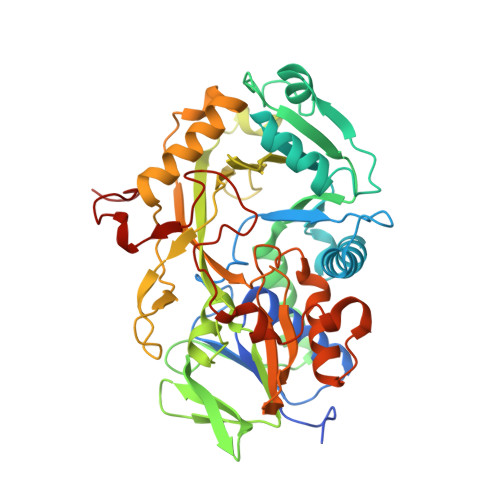Crystal structure of the deglycating enzyme Amadoriase I in its free form and substrate-bound complex.
Rigoldi, F., Gautieri, A., Dalle Vedove, A., Lucarelli, A.P., Vesentini, S., Parisini, E.(2016) Proteins 84: 744-758
- PubMed: 26873906
- DOI: https://doi.org/10.1002/prot.25015
- Primary Citation of Related Structures:
4WCT, 4XWZ - PubMed Abstract:
Amadoriases, also known as fructosyl amine oxidases (FAOX), are enzymes that catalyze the de-glycosylation of fructosyl amino acids. As such, they are excellent candidates for the development of enzyme-based diagnostic and therapeutic tools against age- and diabetes-induced protein glycation. However, mostly because of the lack of a complete structural characterization of the different members of the family, the molecular bases of their substrate specificity have yet to be fully understood. The high resolution crystal structures of the free and the substrate-bound form of Amadoriase I shown herein allow for the identification of key structural features that account for the diverse substrate specificity shown by this class of enzymes. This is of particular importance in the context of the rather limited and partially incomplete structural information that has so far been available in the literature on the members of the FAOX family. Moreover, using molecular dynamics simulations, we describe the tunnel conformation and the free energy profile experienced by the ligand in going from bulk water to the catalytic cavity, showing the presence of four gating helices/loops, followed by an "L-shaped" narrow cavity. In summary, the tridimensional architecture of Amadoriase I presented herein provides a reference structural framework for the design of novel enzymes for diabetes monitoring and protein deglycation. Proteins 2016; 84:744-758. © 2016 Wiley Periodicals, Inc.
Organizational Affiliation:
Dipartimento Di Elettronica, Informazione E Bioingegneria, Politecnico Di Milano, Milano, 20133, Italy.

















